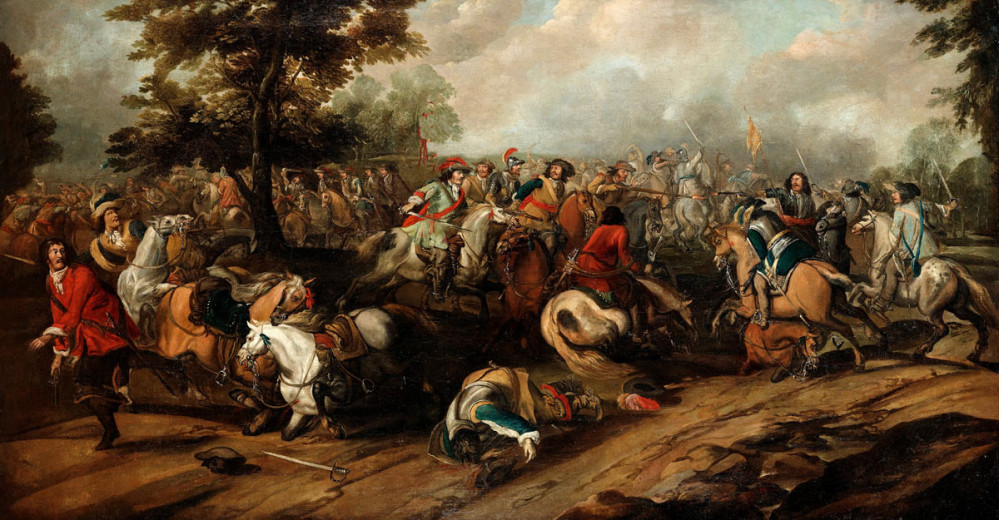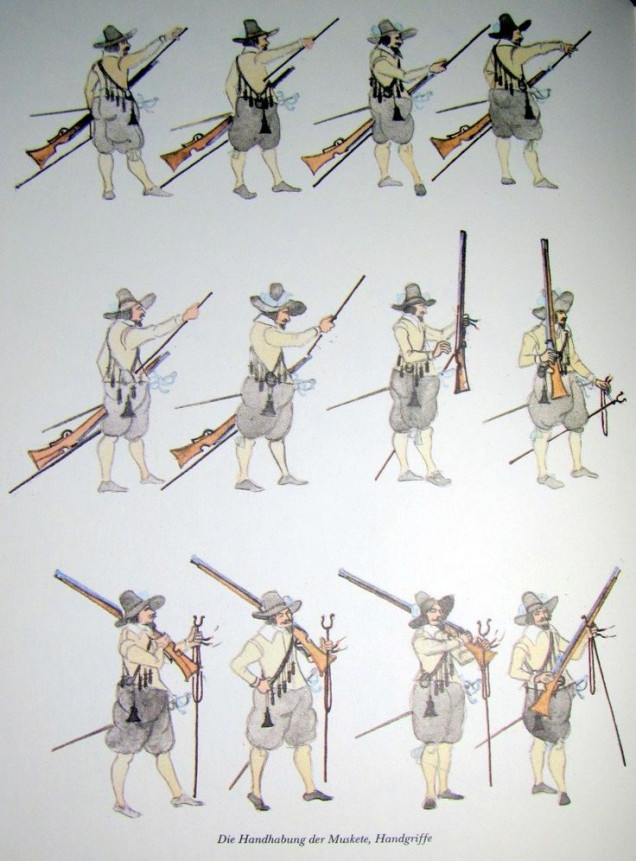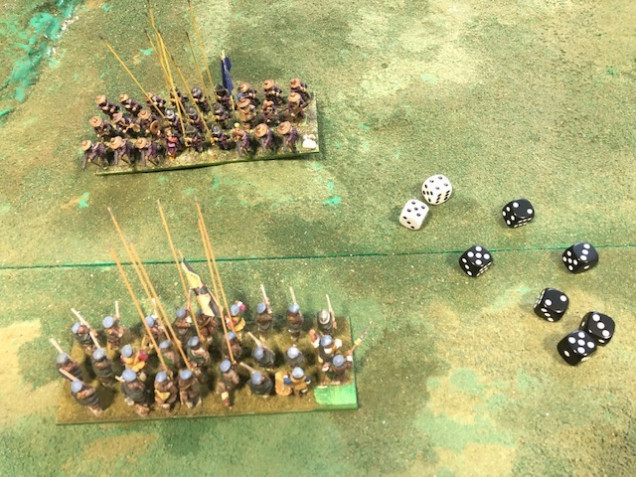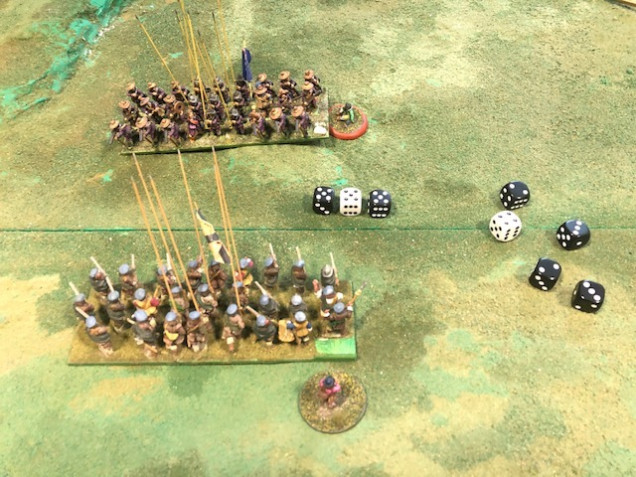
ECW: Time to make war
IT's time to unleash fire power!
A key aspect of any wargame rules are of course how to inflict pain on your enemy! And ECW is no different. My thinking here is to try to ensure that firepower doesn’t dominate the table and that movement is possible without totally risking a wipe-out. So the key, I think, is how you link movement to firepower.
Basically I’ll have three types of firing. Pistols (essentially used by “Trotter” cavalry at relatively short range), Musket fire from either a standard Pike & Shot unit or a “Commanded shot” unit (i.e. one that only comprises musket men”, and artillery.
I have established basic movement rates, particularly for formed up infantry, at 10cm. With that basis set, maximum musket range should fit into this criteria in a way that doesn’t overpower a P:S unit moving into either its own musket range, or on to the push of pikes.
My objective is to try to have a situation where an advancing unit should only suffer one ranged attack at “effective” range during an advance (assuming their commander isn’t an idiot) before either engaging in a fire-fight, or moving closer into melee combat.
So for Muskets the drill was complex, which will be reflected in how many dice are used depending on when the volley is charged. A unit of P:S can make a volley attempt at any time, but if it’s a first volley, or they have spent one turn “reloading” they will get extra dice. (as a gaming mechanism, I will use “reload” models to indicate if a unit is properly set for the volley or not).
I envisage a range set at maximum 30cm, but effective at 15cm. The difference will be the potential severity of the musket volley. Pistols will only have a short range option of 5cms. Artillery is more complex. Although cannon were not particularly effective (at least according to battle reports I’ve read), they can reach the length of a war game table, even if at these maximum ranges their effect would be modest, to say the least. So I’ll probably look at short, medium and long range for artillery.
So, as it stands the fire power of these three types of arm will be:
Pistol: Range 5cm
Musket: Close range up to 15 cm; Long range up to 30cm
Artillery: Close range up to 20cm; Medium range up to 50cm, long range up to 90cm
How this works out in practice I’ll be testing on the table top.
How this works out in practice I’ll be testing on the table top.
So the next issue is how to assess damage? And I’ll admit I am torn between dice being a deciding mechanism, or a table of relative impact based on the units involved. The latter of course requires more planning and would have to take into consideration the units ratio of Shot to Pikes, distance, morale etc.
But I like throwing dice! Even if my son always seems to throw better dice than I do!
There is an interesting mechanic in a rule set called “Victory without Quarter” by Clarence Harrison in which units fire and require a number of “successes” on the dice before a “moral hit” is recorded. A basic unit rolls 6d6 additions and subtractions can be made to the number of dice (rather than the “to hit” number) and every three successful hits adds a casualty marker and requires a morale test. Less than three hits have no long term impact. I quite like this dynamic.
A different approach is made by Principles of War whereby a table of firing results is based on the quality of the unit, the nature of the combat, factors relating to quality of the unit, and a random dice throw. While I like many of the PoW mechanisms, I think this is too complex for my gaming style.
Forlorn Hope is another war game rule set which has a different combat mechanism which incorporates a qualifying criteria based on the ration of P:S. I think this is worthy of some exploration. It seems obvious that a P:S unit on a fairly common 1:2 basis would be able to bring more firepower to bear than a unit on a 2:3 and less than one on a 1:3 basis. How much additional complexity to add now becomes a question. But I am inclined to this small level of detail as I will anyway adopt the PoW unit profiles where P:S ratios will be specified.
1644 by Rick Priestly uses a less complex table for fire fight assessment. Again it adds some variety, but as a dice thrower, I am inclined to explore the concept of VWQ over the other examples.
So what does this mean in practical terms on the table top?
For my standard (basic) games I will not bother to differentiate between P:S ratios among the units on the table. So all are treated as 1:2 Ratio for the purposes of deciding fire power.
A basic P:S unit will therefore have 6 dice (standard D6) when engaging in volley fire. At Long range they need a 6 to hit, and at effective range a 5+ to hit. This will be the basis for all firing effects. So Pistols will require a 5+ at 5cm, and 6 for anything longer, Artillery 6 at long range 5+ at medium and 4+ at short range.
But there will be qualifiers. The qualifiers will be on the number of dice thrown, rather than the number to be hit. (I wonder whether Mantic’s “exploding” dice idea they have for a number of their games is something to consider – although that would only apply to a perfect “6”. Maybe worth testing on the table).
I like the VWQ concept of morale only being a factor with at least 3 hits. So this is also worth exploring. This would be perhaps more challenging with exploding 6’s of course.
I envisage the impacts on each unit being recorded off table, and as their “cohesiveness” falls due to hits and combat effects, their ability to make war also reduces. This could be reflected in a reduction in the number of dice thrown in combat when their “Cohesion” falls to different levels.
I have decided to dispense with “saving throws”. I really don’t see how this additional random variable adds anything to a war game. So it’s a no from me (or at least it is until I am decimated by my son, when I might revisit this!)
PoW have a unit profile sheet which I have simplified to meet my requirements.
|
ECW Unit |
|
Basic starting unit “value” – can change with scenario |
||||||||||
|
Elite Cavalry |
Specific to scenario |
1 |
2 |
3 |
4 |
5 |
6 |
7 |
8 |
9 |
10 |
11 |
|
Other Horse |
Gallopers / Trotters |
1 |
2 |
3 |
4 |
5 |
6 |
7 |
8 |
9 |
10 |
|
|
Dragoon |
Dismount to act as Shot unit |
1 |
2 |
3 |
4 |
5 |
6 |
7 |
8 |
9 |
|
|
|
Pike & Shot |
1 Pike / 2 Shot |
1 |
2 |
3 |
4 |
5 |
6 |
7 |
8 |
9 |
|
|
|
Irregular |
Highlanders |
1 |
2 |
3 |
4 |
5 |
6 |
7 |
8 |
|
|
|
|
Artillery |
All artillery treated the same |
1 |
2 |
3 |
4 |
5 |
6 |
7 |
|
|
|
|
|
|
The starting value reduces with critical hits and represents the Cohesion test figure to roll UNDER when taking a test. If the Cohesion falls to the RED zone the unit becomes “Shaken” automatically and no dice roll is required. An attempt can be made to Rally a unit and recover a lost cohesion point IF the commanding officer is in base contact. |
|||||||||||
Pistols were less effective and so a Trotter unit only throws 4d6. The same Hit criteria apply. This will inevitably make their attacks less effective, but I think this is a reflection of their real impact in the period.
Artillery would throw 6d6 per stand. Same “to hit” rules apply as the artillery was not particularly well developed at this stage in its development.
After some play testing, no doubt I will return and review the whole thing!































![TerrainFest 2024 Begins! Build Terrain With OnTableTop & Win A £300 Prize! [Extended!]](https://images.beastsofwar.com/2024/10/TerrainFEST-2024-Social-Media-Post-Square-225-127.jpg)













































Leave a Reply